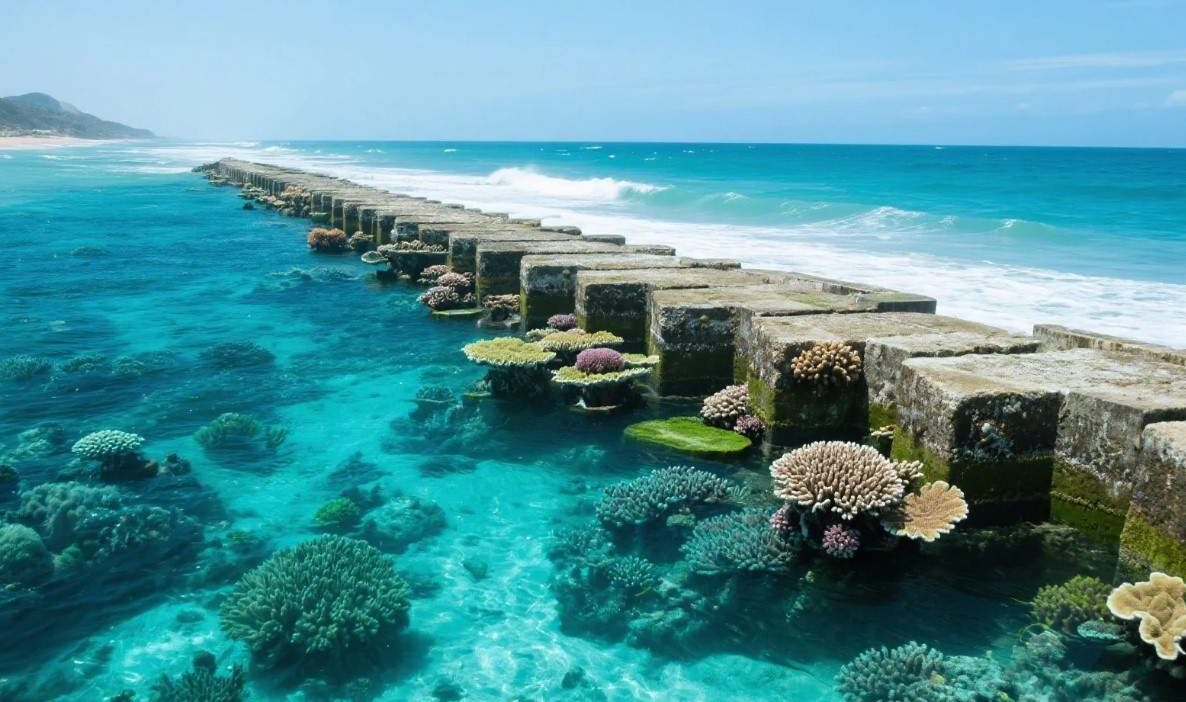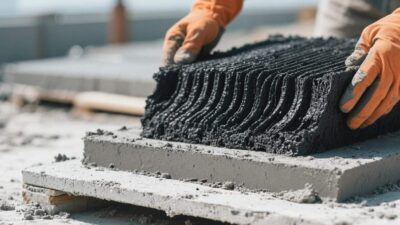Building Nature’s Fortresses to Shield Our Coasts
When the Ocean Knocks, Can Nature Fight Back?
Imagine a storm surging toward a coastal town. Waves crash against crumbling seawalls, eroding beaches and threatening homes. In the distance, a fragile coral reef—once a vibrant underwater city—lies bleached and broken, unable to buffer the onslaught. This is the reality for millions of people living along coastlines, where climate change is amplifying storms, raising sea levels, and weakening the very ecosystems that once protected them.
But what if nature itself could be engineered to fight back? Enter genetically engineered (GE) coral reefs—a revolutionary concept where scientists modify coral species to enhance their resilience, growth, and protective power. These “super corals” aren’t just a scientific curiosity; they’re a lifeline for coastal communities, offering a sustainable way to defend shorelines while restoring marine biodiversity. Let’s dive into how this technology is rewriting the rules of coastal defense.
The Coastal Crisis: Why We Need Nature’s Help
Coastal regions are on the frontlines of climate change. Rising sea levels, intensified storms, and ocean acidification are decimating natural defenses like mangroves, salt marshes, and coral reefs. Traditional solutions—seawalls, breakwaters, and sandbags—are expensive, short-lived, and often destructive to ecosystems. For example, seawalls reflect wave energy, accelerating erosion behind them, while sandbags wash away during storms, leaving communities vulnerable again.
Coral reefs, however, are nature’s original coastal engineers. These underwater structures reduce wave energy by up to 97%, protecting 25% of marine species and supporting 500 million people globally. But even the hardiest corals are struggling. Warming oceans cause coral bleaching (when stressed corals expel symbiotic algae), while ocean acidification weakens their calcium carbonate skeletons. In the past 30 years, half of the world’s coral reefs have died.
Enter GE corals: a way to supercharge nature’s defenses. By tweaking coral genetics, scientists aim to create reefs that are faster-growing, more stress-tolerant, and better equipped to rebuild after disasters.
How Genetically Engineered Corals Work: The Science of Super Reefs
Genetic engineering allows scientists to modify coral DNA to enhance specific traits. Here’s how it’s done:
1. Boosting Stress Tolerance
Corals face two main threats from climate change: rising temperatures and ocean acidification. To combat this, researchers are inserting genes from heat-tolerant organisms (like certain algae or extremophiles) into coral genomes. For example:
- Heat-shock proteins (HSPs): These proteins help cells repair damage from high temperatures. By inserting HSP genes into corals, scientists have created “thermally resilient” corals that survive water temperatures 2–3°C higher than their wild counterparts.
- Carbonic anhydrase enzymes: These enzymes help corals absorb CO₂ and build calcium carbonate skeletons faster. Enhancing their activity could make reefs grow 30–50% quicker, accelerating recovery after storms.
2. Strengthening Symbiosis
Corals rely on tiny algae (zooxanthellae) living in their tissues to produce energy via photosynthesis. When oceans warm, corals expel these algae, leading to bleaching. GE corals can be modified to:
- Retain zooxanthellae longer: By editing genes that regulate the coral-algae relationship, scientists hope to prevent bleaching even under stress.
- Diversify algae partners: Introducing algae strains from warmer regions could help corals adapt to rising temperatures.
3. Enhancing Structural Integrity
Reefs need strong skeletons to withstand waves. GE corals can be engineered to produce more robust calcium carbonate (CaCO₃) structures. For instance:
- Collagen-like proteins: Adding genes for stronger structural proteins could make coral skeletons more resistant to breakage.
- Anti-biofouling traits: Preventing algae or barnacles from attaching to reefs keeps them clean and functional.
The Benefits: More Than Just a Wall of Reefs
GE corals offer a trifecta of benefits for coastal communities and ecosystems:
1. Superior Coastal Defense
Engineered reefs are living barriers that grow with the threat. Unlike static seawalls, they:
- Absorb wave energy: A 1-meter-tall reef can reduce wave height by 60%, protecting beaches and infrastructure.
- Accumulate sediment: Reef structures trap sand, rebuilding eroded beaches naturally.
- Self-repair: If damaged, GE corals can regrow faster than wild ones, thanks to enhanced growth genes.
In the Caribbean, a pilot project with heat-tolerant GE corals showed that reefs recovered 40% faster after a hurricane than wild reefs, reducing beach erosion by 50% in just two years.
2. Revitalizing Marine Ecosystems
Healthy reefs support 25% of marine life, from fish to sharks. GE corals:
- Boost biodiversity: By providing stable habitats, they attract fish, crustaceans, and other species, enhancing fisheries that feed millions.
- Sequester carbon: Faster-growing reefs absorb more CO₂, helping mitigate climate change. A single acre of reef can store 15 tons of carbon annually—equivalent to planting 2,500 trees.
3. Economic Resilience
Coastal economies depend on tourism, fishing, and shipping. GE corals:
- Protect investments: By reducing erosion, they safeguard homes, businesses, and ports, saving billions in disaster recovery costs.
- Create jobs: Restoring reefs generates employment for divers, scientists, and local communities, boosting regional economies.
Challenges: Navigating the Risks of Playing “Nature’s Engineer”
While promising, GE corals raise complex questions:
1. Ecological Risks
- Invasive potential: Could GE corals outcompete native species, disrupting local ecosystems? For example, a faster-growing GE coral might dominate reefs, reducing biodiversity.
- Unintended consequences: Modifying symbiotic relationships could harm other marine life. If GE corals no longer support certain algae, it might disrupt food webs.
2. Technical Hurdles
- Stability of modifications: Ensuring engineered traits persist across generations is critical. If genes are lost over time, reefs might revert to their original, vulnerable state.
- Environmental factors: Corals in different regions face unique stressors (e.g., pollution vs. warming). A one-size-fits-all GE solution may not work globally.
3. Regulatory and Ethical Debates
- Governance gaps: There’s no global framework for regulating GE marine organisms. Who decides which traits to engineer, and how do we prevent misuse?
- Public perception: Some view GE corals as “unnatural” or a distraction from reducing fossil fuel emissions. Building trust requires transparency and community involvement.
Real-World Progress: From Labs to Reefs
GE corals are no longer confined to research labs. Several projects are testing their potential:
- Australia’s Great Barrier Reef: Scientists at the Australian Institute of Marine Science (AIMS) are breeding heat-tolerant corals using selective breeding (a form of genetic engineering). Early trials show these corals survive 1–2°C warmer waters than wild ones.
- Caribbean Restoration: The Mote Marine Laboratory in Florida has planted 10,000+ GE staghorn corals in the Florida Keys. These corals grow 2–3 times faster than wild ones and are more resistant to disease.
- Southeast Asia: In the Philippines, researchers are engineering corals to thrive in acidic, polluted waters. Early results show these reefs support 30% more fish species than degraded reefs.
The Future: Corals as Climate Warriors
The next frontier for GE corals lies in innovation and collaboration:
- CRISPR and Synthetic Biology: Tools like CRISPR-Cas9 allow precise gene editing, enabling scientists to insert multiple stress-tolerance genes into corals simultaneously.
- 3D-Printed Reef Scaffolds: Combining GE corals with 3D-printed structures could accelerate reef growth, creating custom habitats for marine life.
- Global Partnerships: International coalitions (e.g., the Global Coral Reef Alliance) are working to standardize GE coral research and deployment, ensuring ethical and effective use.
Nature’s Defense, Engineered by Us
Genetically engineered coral reefs are more than a technological marvel—they’re a testament to humanity’s ability to collaborate with nature. By enhancing coral resilience, these super reefs protect coastal communities, restore marine ecosystems, and fight climate change.
But they’re not a silver bullet. Success depends on balancing innovation with caution, ensuring GE corals are safe, equitable, and aligned with broader climate goals. As marine biologist Ruth Gates, a pioneer of coral restoration, once said, “Corals are the canaries of the ocean. If we save them, we save ourselves.”
With continued research, policy support, and community engagement, GE corals could become the frontline defenders of our coasts—proving that nature, when empowered, is our greatest ally.
Join the conversation at AIDNESS. Should we prioritize GE corals in coastal defense? Can we ensure they’re used responsibly? Share your thoughts—we’re all part of this journey to build a more resilient planet.



